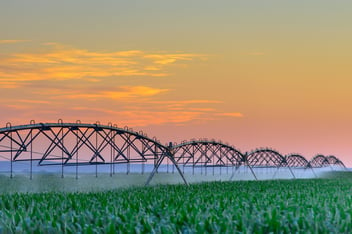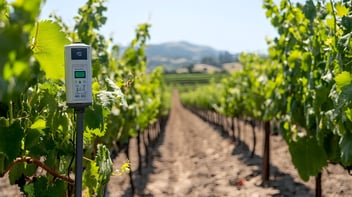
Embrace the Evolution: Navigating the 2G/3G Sunset in Agriculture
The impending sunset of 2G and 3G networks is a significant milestone in the evolution of telecommunications technology. However, this transition presents both challenges and opportunities, particularly for the agriculture industry, which has increasingly relied on IoT connectivity to drive efficiency and innovation.
Understanding the 2G/3G Sunset
The term "2G/3G sunset" refers to the planned discontinuation of second and third-generation wireless networks.
Telecom providers are gradually discontinuing these antiquated networks to reuse the spectrum for cutting-edge technologies, such as 4G LTE, 5G, and LPWAN, which offer enhanced speed, capacity, and dependability.
The Historical Context
2G and 3G networks have been instrumental in the proliferation of mobile connectivity over the past few decades. While 2G introduced digital voice and SMS services, 3G expanded the capabilities to include mobile internet and data services. However, as demand for high-speed internet and data-intensive applications grows, the limitations of these older networks become increasingly apparent.
Implications for the Agriculture Industry
For the agriculture sector, the 2G/3G sunset poses a unique set of challenges. Many agricultural IoT applications, such as remote monitoring of soil moisture, weather conditions, and livestock tracking, have been built on these networks. The discontinuation of 2G and 3G services necessitates a transition to newer technologies, which can be both costly and complex.
The Impact on IoT Connectivity for Agriculture
IoT connectivity is pivotal for modern agriculture, enabling precision farming, real-time monitoring, and data-driven decision-making. The 2G/3G sunset could disrupt these operations if proactive measures are not taken.
Disruption of Existing Systems
Many existing IoT devices in agriculture are designed to operate on 2G or 3G networks. As these networks are phased out, these devices may lose connectivity, rendering them ineffective. This disruption could lead to significant downtime and operational inefficiencies.
Financial Implications
The transition to newer technologies involves substantial financial investment. Farmers and agricultural businesses may need to upgrade their IoT devices and infrastructure to be compatible with 4G or 5G networks. While this investment promises long-term benefits, the initial costs can be a barrier, especially for smaller operations.
Technological Challenges
The shift to 4G, 5G, LPWAN technologies is not just a matter of upgrading devices. It requires a comprehensive overhaul of the existing infrastructure, including network configuration, data management systems, and security protocols. Ensuring seamless integration and interoperability between new and existing systems is a complex challenge that demands expertise and careful planning.
Alternatives and Solutions
Despite the challenges, the 2G/3G sunset also presents an opportunity to adopt more advanced and efficient technologies. Here are some alternatives and solutions that can help mitigate the impact on the agriculture industry.
Transition to 4G LTE
4G LTE offers significant improvements over 2G and 3G, including higher data transfer rates, lower latency, and greater network capacity. Transitioning to 4G LTE can enhance the performance of agricultural IoT applications, enabling more sophisticated data analysis and real-time decision-making.
Adoption of 5G Technology
5G represents the next frontier in wireless connectivity, offering unparalleled speed, capacity, and reliability. For agriculture, 5G can support advanced applications such as autonomous machinery, drone-based crop monitoring, and real-time analytics. While the adoption of 5G is still in its early stages, it holds immense potential for revolutionizing agricultural practices.
Implementation of LPWAN Technologies
Low Power Wide Area Networks (LPWAN) technologies, such as LTE-M and NB-IoT, offer an alternative for IoT connectivity in agriculture. These technologies are designed for low-power, long-range communication, making them ideal for remote monitoring and sensor-based applications. LPWAN can complement 4G and 5G by providing cost-effective connectivity for specific use cases.
Strategic Considerations for a Smooth Transition
Navigating the 2G/3G sunset requires a strategic approach that balances short-term challenges with long-term benefits. Below are a few crucial factors for a seamless transition.
Conducting a Comprehensive Audit
Begin by conducting a comprehensive audit of your existing IoT infrastructure. Identify devices and systems that rely on 2G or 3G networks and assess their compatibility with newer technologies. This audit will provide a clear understanding of the scope of the transition and help prioritize upgrades.
Collaborating with Technology Partners
Collaborate with technology partners who have expertise in IoT connectivity and network transitions. Companies like Velos IoT can provide valuable insights and support in upgrading your infrastructure, ensuring seamless integration and minimizing disruption.
Developing a Transition Roadmap
Develop a detailed transition roadmap that outlines the steps and timelines for upgrading your IoT infrastructure. This roadmap should include milestones for device replacement, network configuration, and system integration. A well-defined roadmap will help manage the transition effectively and ensure that all stakeholders are aligned.
Investing in Training and Support
Ensure your team is trained and supported adequately to manage the new technologies effectively.
This includes training on new devices, network management, and data security protocols. Providing ongoing support will help address any challenges that arise during the transition.
Conclusion
The 2G/3G sunset marks a significant shift in the telecommunications landscape, with profound implications for the agriculture industry. While the transition poses challenges, it also offers an opportunity to adopt more advanced and efficient technologies. By taking proactive measures and leveraging the right solutions, the agriculture industry can navigate this transition smoothly and unlock new possibilities for innovation and growth.
Embrace the future of IoT connectivity for agriculture with strategic planning and collaboration, ensuring that your operations remain resilient and competitive in the evolving technological landscape.
Velos IoT Connectivity Solutions for Agriculture
Velos IoT is a leading provider of IoT connectivity solutions for the agriculture industry. Our Connect LPWA solution offers a reliable and cost-effective alternative for IoT connectivity in agriculture. With Velos IoT, farmers and agribusinesses can seamlessly transition to advanced technologies, ensuring efficient operations and data-driven decision-making.
For additional information on Velos IoT's agricultural cellular IoT connectivity, please visit here. To understand our Low Power Connectivity LPWAN solution, visit our Connect LPWA solution page.
Speak to a Velos IoT expert
Related articles


IoT in Agriculture: Why IoT is key to the future of farming?
If agriculture is to continue to feed the growing population, it needs to overcome the challenges...


